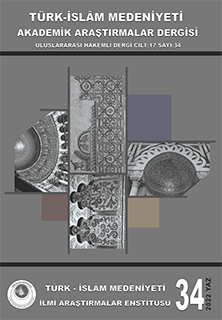Diyarbakir (Suriçi): A Cultural Heritage with Its Color Faded in the Urban and Collective Memory in the Edge of Insolent Time(s)
DOI:
https://doi.org/10.5281/zenodo.6468482Keywords:
Diyarbakır, Suriçi, Cultural Heritage, Social Transformation, Conflicting EnvironmentAbstract
Having come into existence over the ongoing values of the Mesopotamian, Anatolian and Islam civilizations, the historical urban settlement tissue (Suriçi) of Diyarbakır (mosques, churches, hammams, monumental structures, city walls and traditional houses, etc.) represents one aspect of consensuses having made its presence felt in social and cultural structure to date by having been affected by the values of different cultures having existed historically. Cultural and spatial relations having come into existence in the plane of the time give opportunities for representation of an environment sustained and shared by a common togetherness. “Cultural and architectural heritage” featuring the emphasis of structure over social and spatial morphology of historical cities host the physical tissue of settlements taking shape together with cultural pluralism and tissue pattern created in the edge of social layers. In this context, the physical awareness of historical and spatial urban settlement patterns of Diyarbakır embodied in the claim of becoming a world heritage has ensured it to be included in UNESCO World Cultural Heritage List by being accepted with the definition “Diyarbakır Fortress and Hevsel Gardens Cultural Heritage Landscape” in 2015. This study has focused on the determination of how and with which outcomes the cultural and architectural heritage patterns providing the memory representation of the city faced together with the spiral of violence coming into existence in the environment of ongoing migration having bunched in the historical Suriçi region of Diyarbakır and near the walls of the city and the situation having resulted from violence/conflicted environment coming into existence in the last months of 2015. In its focal point, this study brings forward again how crucial cultural location patterns discussed on conflicted environment(s) and forming a historical memory system are. And this will ensure that Diyarbakır Suriçi being of international importance is brought forward again for universal values disappearing or crumpled in the spiral of violence to be able to be continued with the hope that it will contribute to “restructuring” and “reconstruction” processes that are highly likely to be appear in ordinary periods or situations.
References
Atlı, M. (2014). Hepsi Diyarbakır, İletişim Yayınları, İstanbul.
Bachelard, G. (2017). Mekânın Poetikası, çev. Alp Tümertekin, İthaki Yayınları, İstanbul.
Bektaş, C. (2004). Kentli Olmak Ya Da Olmamak, Evrensel Basım Yayın, İstanbul, s.41.
Benjamin, W. (2017). Pasajlar, çev. Ahmet Cemal, Yapı Kredi Yayınları (YKY), İstanbul.
Berger, J. (2017). Kıymetini Bil Her Şeyin, çev. Beril Eyüboğlu, Metis Yayınları, İstanbul.
Bookchin, M. (2014). Kentsiz Kentleşme: Yurttaşlığın Yükselişi ve Çöküşü, çev. Burak Özyalçın, Sümer Yayıncılık, İstanbul.
Calvino, I. (2010). Görünmez Kentler, çev. Işıl Saatçioğlu, Yapı Kredi Yayınları (YKY), 2010, İstanbul.
Karasu, M. A. (2008). “Bir Kentin Ölümü: Kentkırım (Bosna-Hersek Örneği)”, Çağdaş Yerel Yönetimler, cilt:17, sayı:3, ss.51-64.
Kavafis, K. (2010). Kavafis’ten Yüz Şiir, çev. Cevat Çapan, Helikopter Yayınları, İstanbul, (“Şehir” adlı şiirinden).
Mai, U. (2016). “Doğu Alman Kentlerinde Kültür Şoku ve Kimlik Bunalımı”, Mekân Kültür İktidar, Ayşe Öncü ve Petra Weyland, (Der.), İletişim Yayınları, İstanbul.
Margosyan, M. (2013). Söyle Margos Nerelisen?, Aras Yayınları, , İstanbul.
Nietzsche, F. W. (1998). Böyle Buyurdu Zerdüşt, (Çev.) A. T. Oflazoğlu, Cem Yayınevi, İstanbul.
Öncü, A., Weyland, P. (2005). “Küreselleşen Kentlerde Yaşam Alanları ve Kimlik Mücadeleleri”, Mekân, Kültür, İktidar, (çev.) Leyla Şimşek ve Nilgün Uygun, İletişim Yayınları, İstanbul.
Salam, A. (1997). “Speech”, Reconstruction of War-Torn Cities, International Conference, Order of Engineers and Architects, 10-14 Kasım 1997, Beyrut, ss.7-9.
Sami, K. (2016). Diyarbakır Suriçi ve Çatışmalı Ortam: Gözü Mühürlü Mekânlar ve Yıkıma Direnen Kültürel Miras, Mimarlık, Sayı: 392, s.66-70.
Uyar, T. (2019). Aşkın Yıpranma Payı, Yapı Kredi Yayınları (YKY), 2019, İstanbul.
Tekeli, İ. (1991). Kent Planlaması Konuşmaları, TMMOB Mimarlar Odası Yayınları, Ankara.
Weber, M. (2012). Şehir: Modern Kentin Oluşumu, çev. Musa Ceylan, Yarın Yayınları, İstanbul.
Downloads
Published
How to Cite
Issue
Section
License

This work is licensed under a Creative Commons Attribution-NonCommercial 4.0 International License.







